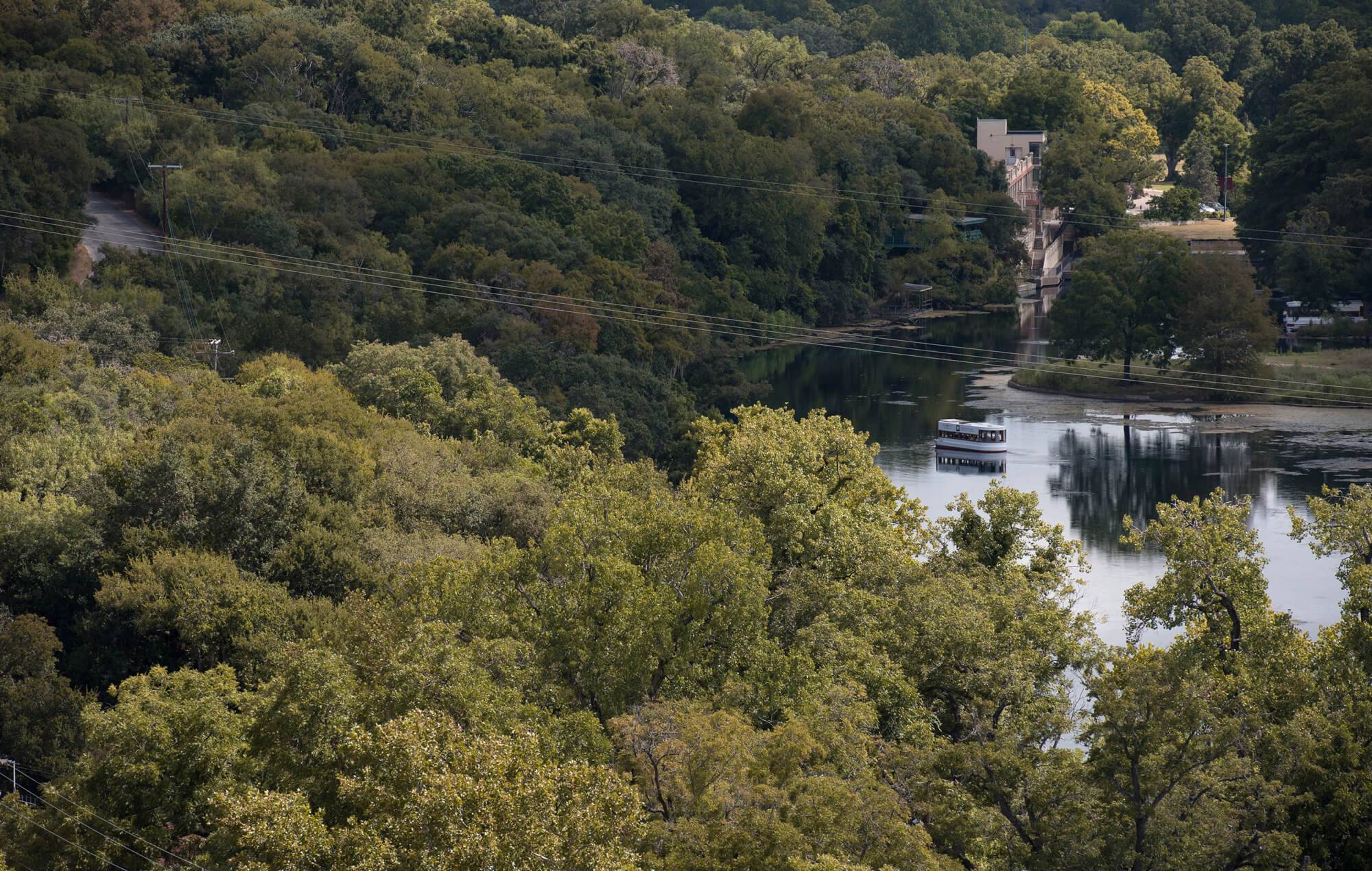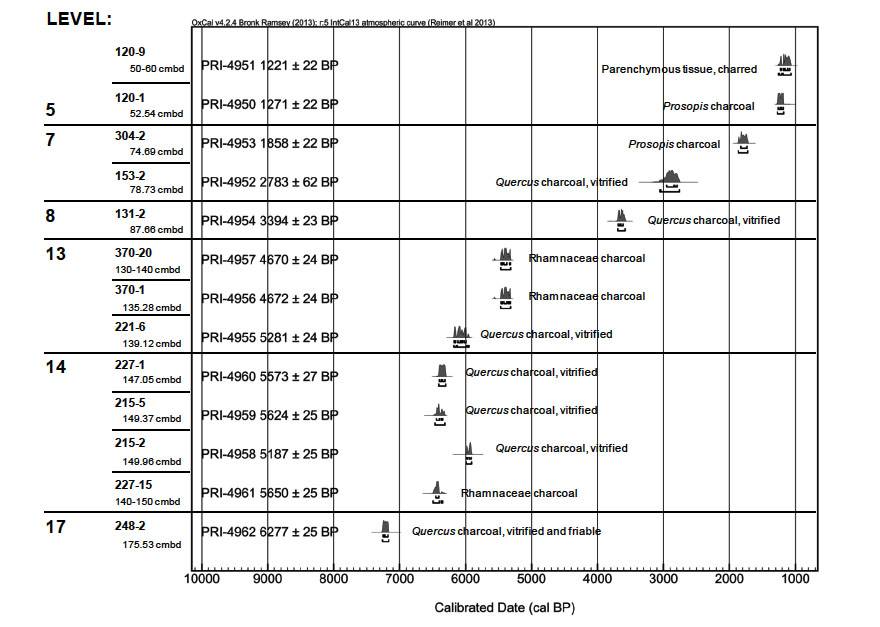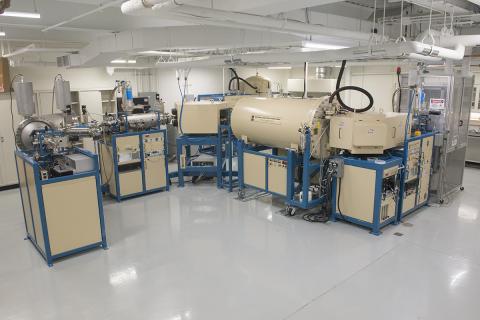Chronology and Dating
There are two major types of dating that are used in archaeology. Absolute dating means that the archaeologist can perform scientific tests directly on an artifact that determine the time period during which the artifact was made. Carbon isotope dating (carbon-14) is an example of one method of absolute dating. Relative dating is used when a particular type of artifact is found many times at many sites in the same context with artifacts that can be absolutely dated to a particular time period. Once the relationship between the absolute dates and the type of artifact is firmly established, the presence of the type of artifact alone can be used to date a site.
Similar to most systematic archaeological projects, CAS archaeologists identified a series of research questions and objectives before the excavations at Spring Lake even began. All of our work planning, excavating, sampling and processing (washing, sorting and cataloging) the artifacts was performed with 3 research domains in mind:
- chronology and culture historical reconstruction;
- geoarchaeology, site formation, and environmental reconstructions; and
- better defining the Calf Creek horizon at Spring Lake, including its technological characteristics and how subsistence-related behaviors changed during this brief interval of big game (bison) hunting at the end of the Early Archaic, ca. 5750 to 6000 years ago.
The analyses planned to address these questions cannot begin until there is 1) a complete catalog of artifacts, ecofacts and samples collected, and 2) a preliminary list of Analytical Units (AUs). AUs are a set of discrete, intact deposits of sediment that represent recognizable periods in the occupational history of the site. They are chronological in nature, and therefore rely on the law of superposition, cross-dating principles, typology, and context. Ultimately, the AUs will be a series of excavated proveniences that can be associated with a given time period that will provide the basis for all detailed, context-specific analyses that will be conducted. This step is vital for assessing behavioral changes through time. They can begin as preliminary and can be updated and refined once absolute dates from bone and charcoal are available.
Dating with Diagnostic Artifacts
The first step in the process of defining AUs was to take a closer look at the time-diagnostic projectile points. The entire collection of points and point fragments was examined. Classifications, or point types, were assigned to the specimens that fit within the established projectile point typology for Texas.
In all, twenty six different temporally diagnostic projectile point types were found during our 2014 excavations at Spring Lake, including: Wilson and Dalton of the Paleoindian (n=6); Gower, Uvalde, Bandy, Merrell, and Martindale of the Early Archaic (n= 13); Andice and Bell from the Calf Creek component (n=6); Baird (aka Taylor or Early Triangular), Nolan, Travis, Desmuke and Pandale from the Middle Archaic (n=25); Bulverde, Castroville, Ellis, Edgewood, Ensor, Fairland, Marcos, Montell, Morhiss, Pedernales, Lange, Marshall and Darl of the Late Archaic (n=59); Scallorn and Perdiz arrow points of the Late Prehistoric (n=7).
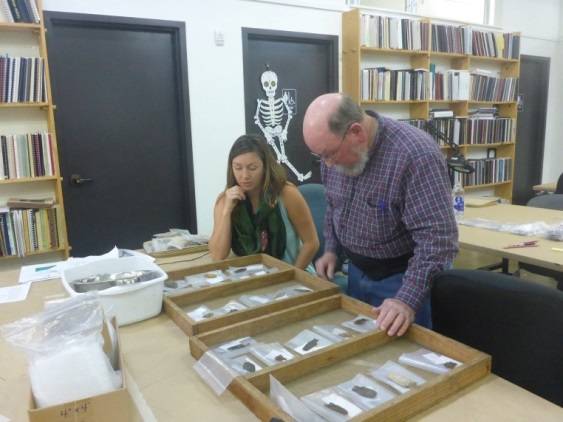
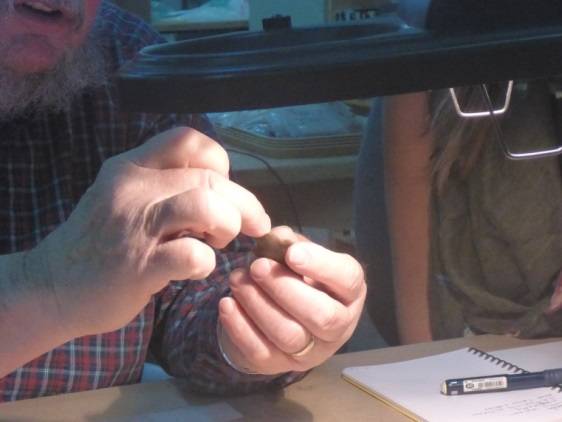
The next step involved discussions with a Geoarchaeologist about which excavation units showed signs of post depositional disturbances. Any excavated units and levels that were considered to have mixed deposits were identified and eliminated as unsuitable contexts for defining the AUs. Then, the typed projectile points that were recovered from within unit levels that were determined to have good contextual integrity were evaluated stratigraphically. Unit-levels that showed evidence for more than one time period were considered mixed or compressed and were not considered reliable for analysis. Alternatively, unit-levels that did not contain any time-diagnostic information at all did not receive an analytical unit designation since it would be impossible to know whether these contain mixed or intact deposits.
Currently, the analytical units for our SLDR project include a series of lots (proveniences) that correspond with all of the general Prehistoric time periods in the existing Central Texas chronology (table below) from the Toyah phase of the Late Prehistoric at the top to the Late Paleoindian at the bottom.
Importantly, we encountered intact Calf Creek components in both excavation blocks at similar elevations. These, alongside the Calf Creek component recorded during our 2012 data recovery excavations at Spring Lake (Lohse et al 2012) are believed to be the only intact Calf Creek components with datable materials yet documented in Central Texas!
Central Texas Chronology
| Epoch | Period | Certain Diagnostic Types | Age (years Before Present) |
|---|---|---|---|
| Holocene | Historic | ~AD 1550 | |
| Late Prehistoric/Toyah | Perdiz | 650- <300 | |
| Transitional Archaic/Austin | Darl, Scallorn, Edwards | 1270-650 | |
| Late Archaic III | Ensor, Fairland, Frio, Ellis | 2150-1270 | |
| Late Archaic II | Montell, Castroville, Marcos | 3100-2150 | |
| Late Archaic I | Bulverde, Pedernales, Marshall, Lange, Williams | 4200/4100-3100 | |
| Middle Archaic | Early Triangular (Baird, Taylor), Nolan, Travis | 5750-4200/4100 | |
| Early Archaic III | Calf Creek (Bell, Andice), Martindale, Bandy | 6000(?)-5750 | |
| Early Archaic II | Uvalde, Gower, Hoxie, Jetta | 8000-6300 (?) | |
| Early Archaic I | Angostura | 8800-8000 | |
| Pleistocene | Late Paleoindian | Golondrina, St. Mary’s Hall | 10,200-8800 |
| Early Paleoindian | Clovis, Folsom | 13,500-10,200 |
Table: Cultural chronology for Central Texas from Lohse et al 2012. Every one of these time periods, and all of the key types (and others) are present at Spring Lake.
